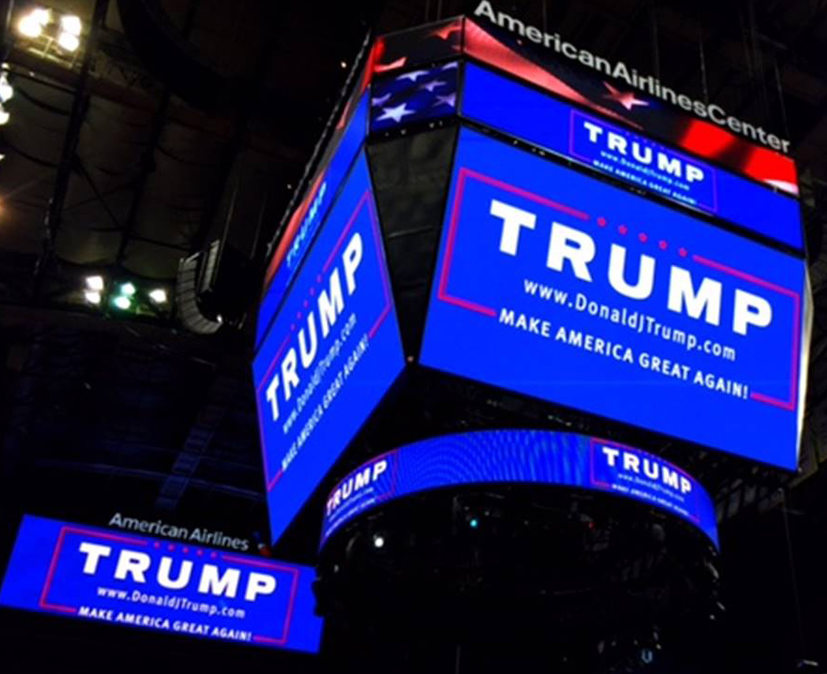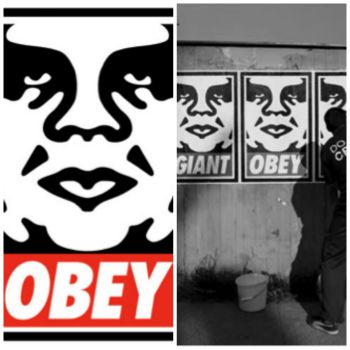You see it everywhere - on the news, attached to the sides of giant skyscrapers, on the cover of books, magazines in giant, bold letters: T-R-U-M-P. Made prominent by none other than Donald himself, the Trump name has the power to fill luxury mega-hotels, close multi-million dollar deals, and grab headlines like it is going out of style. Simply tacking the word onto the side of a building transforms it from a location into a destination.
But how?
Here’s how: branding is like magic.
Imagine I have two identical pairs of blue jeans which we will call “A” and “B”. Everything, from the retail price of $20 to the topstitching, is exactly the same.
Watch carefully as I sew this Dolce & Gabbana logo on pair A…
Almost done… and… vwah-LAH! A flick of the wrist (and some needle and thread), and the transformation is complete. In a mere matter of sentences, pair A’s MSRP jumped from $20 to $300 – a whopping 1500% increase!
“That’s ridiculous,” your logical brain says, “value is subjective.”
Exactly! Value IS subjective; pair A is only as valuable as the highest price a consumer is willing to pay for it. The truth is consumers are willing to pay a premium for the brand even if the only value-added is the brand itself. Harvard Business School professor Gerald Zaltman in his book, How Customers Think: Essential Insights into the Mind of the Market, says that 95% of our purchase decisions take place in the subconscious mind. When deciding between two identical pairs of jeans, one made by a no-name brand and one made by Dolce & Gabbana, your subconscious tells you that the latter is most likely higher quality, more fashionable, etc., even if logic says otherwise.
So, back to our original question – how does a word like “TRUMP” increase a building’s value?
Let’s revisit that in a moment.
Have you ever seen this poster before? A man named Shepard Fairey designed it. You may know him as the artist behind the iconic “Hope Poster” of Barack Obama. Before making his fortune off politics, Shepard scaled rooftops, billboards, and practically anywhere visible to the public eye with nothing but a bucket of paint, a roller, and a poster he designed featuring a black and white portrait of the wrestler Andre the Giant with the word “OBEY” underneath. His goal: create a generation of blindly-obedient WWE enthusiasts that will eventually take over primetime television and the world as we know it.
Well, that last part might not be true, but Shepard Fairey was certainly interested in what he called, “An experiment in phenomenology”. Basically, he hoped to spark a phenomenon based around image that had no inherent meaning or significance. Over the course of his work, Shepard managed to plaster Andre the Giant’s gorgeous, black and white mug all over the world.
Imagine seeing this image twice while you drive to work, three times while you walk from your car to work, and once in the elevator on the way up to your office. You start to ask yourself, “What does this mean? Did I miss something? Have my coworkers seen these before?” Even if you do not understand the image, you begin to prescribe your own meaning to it. You keep seeing it everywhere, causing the image to take on an illusion of significance. This happens behind the scenes in your subconscious mind.
Shepard Fairey’s time-consuming experiment shows us that repetitive exposure to a brand impacts our perception of the brand. The more often you see a brand, the more significant it seems – the more we give it meaning.
While the two examples are not necessarily interchangeable, consider the similarities between Shepard Fairey and Donald Trump’s approach to branding. They both created brands with very little value to begin with, which, through intensive repetition, became industry leaders in their respective categories.
Brand repetition is not necessarily all that easy. To be successful, it requires consistency across all channels: well defined brand imagery, an unflinching brand message, and, of course, plenty of repetition. If you can keep your brand in minds of consumers for just two seconds every week, you start to become an authority within your industry. Imagine if you got two seconds of exposure every day!
Now. Back to the original question: how does a word like “Trump” transform a building from a location into a destination? Repetition, repetition, repetition, repetition, repetition…
By Ryan Laffler, Account Manager





